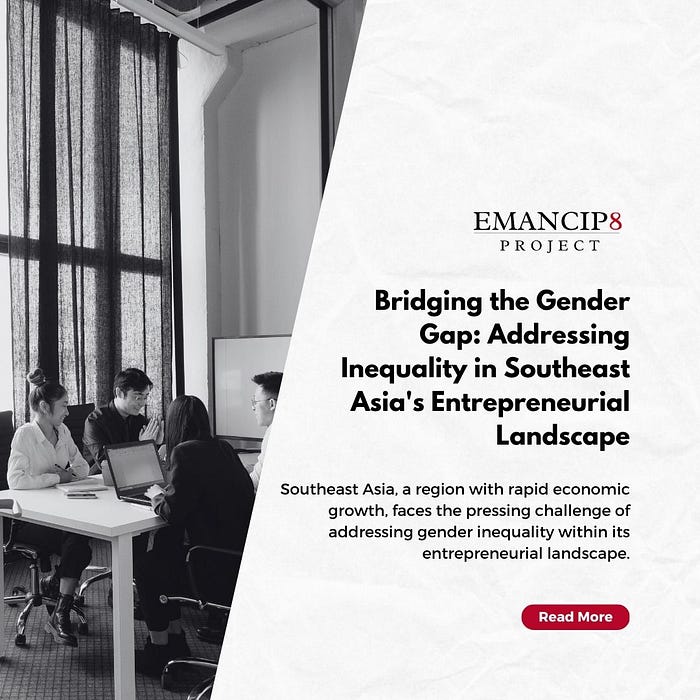Bridging the Gender Gap: Addressing Inequality in Southeast Asia's Entrepreneurial Landscape by Emancip8 Project

Southeast Asia, a region with rapid economic growth, faces the pressing challenge of addressing gender inequality within its entrepreneurial landscape. This article explores the complex barriers women entrepreneurs encounter and emphasizes the necessity of comprehensive policy interventions to bridge the gender gap in the region.
Stereotypes and cultural norms often limit women’s entrepreneurial opportunities in Southeast Asia (Brush et al., 2009). Traditional expectations can constrain women’s aspirations and reinforce gender biases within the business ecosystem. By challenging these beliefs and promoting gender-neutral attitudes, the region can cultivate a more inclusive entrepreneurial environment.
Access to financial resources remains a persistent obstacle for women entrepreneurs in Southeast Asia (Nguyen et al., 2015). Women-owned businesses are frequently at a disadvantage when seeking loans, grants, or investments, as financial institutions often hold implicit or explicit gender biases. By adopting gender-sensitive lending practices, the region can empower women entrepreneurs and enhance their access to essential resources.
Networking and mentorship programs play a crucial role in fostering entrepreneurial success, yet women in Southeast Asia face a scarcity of role models and support networks (Napier & Hoang, 2012). By establishing targeted initiatives that promote connections and collaborations among women entrepreneurs, Southeast Asian countries can address this gap and enable women to thrive in the business world.
Education and skill development are indispensable for entrepreneurial success, but women in Southeast Asia often encounter disparities in access to resources and training (Sakellariou & Patrinos, 2014). By investing in targeted educational programs and providing resources tailored to women’s needs, the region can equip women with the necessary skills and knowledge to establish and grow successful businesses.
In conclusion, bridging the gender gap in Southeast Asia’s entrepreneurial landscape requires a multifaceted approach that addresses cultural norms, financial barriers, networking deficiencies, and educational disparities. Through comprehensive policy interventions and support systems, Southeast Asian countries can foster a more equitable and prosperous environment for women entrepreneurs.
References:
1.Brush, C. G., De Bruin, A., & Welter, F. (2009). A gender-aware framework for women’s entrepreneurship. International Journal of Gender and Entrepreneurship, 1(1), 8–24.
2. Nguyen, H. T., Nguyen, H. V., Nguyen, D. D., & Phan, Q. T. (2015). Women entrepreneurship in Asia: Evidence from Vietnam, Indonesia, and the Philippines. Journal of Social Sciences and Humanities, 3(3), 95–104.
3. Napier, N. K., & Hoang, T. P. (2012). Entrepreneurship in Vietnam: Transformation and dynamics. Entrepreneurship Theory and Practice, 36(4), 769–794.
4. Sakellariou, C., & Patrinos, H. A. (2014). Quality of schooling, returns to schooling and the 1981 vouchers reform in Chile. World Development, 64, 669–682.
5. Welter, F., Brush, C., & De Bruin, A. (2014). The gendering of entrepreneurship context. International Journal of Gender and Entrepreneurship, 6(2), 102–129.
Read more at Emancip8 Project.
Comments
Post a Comment